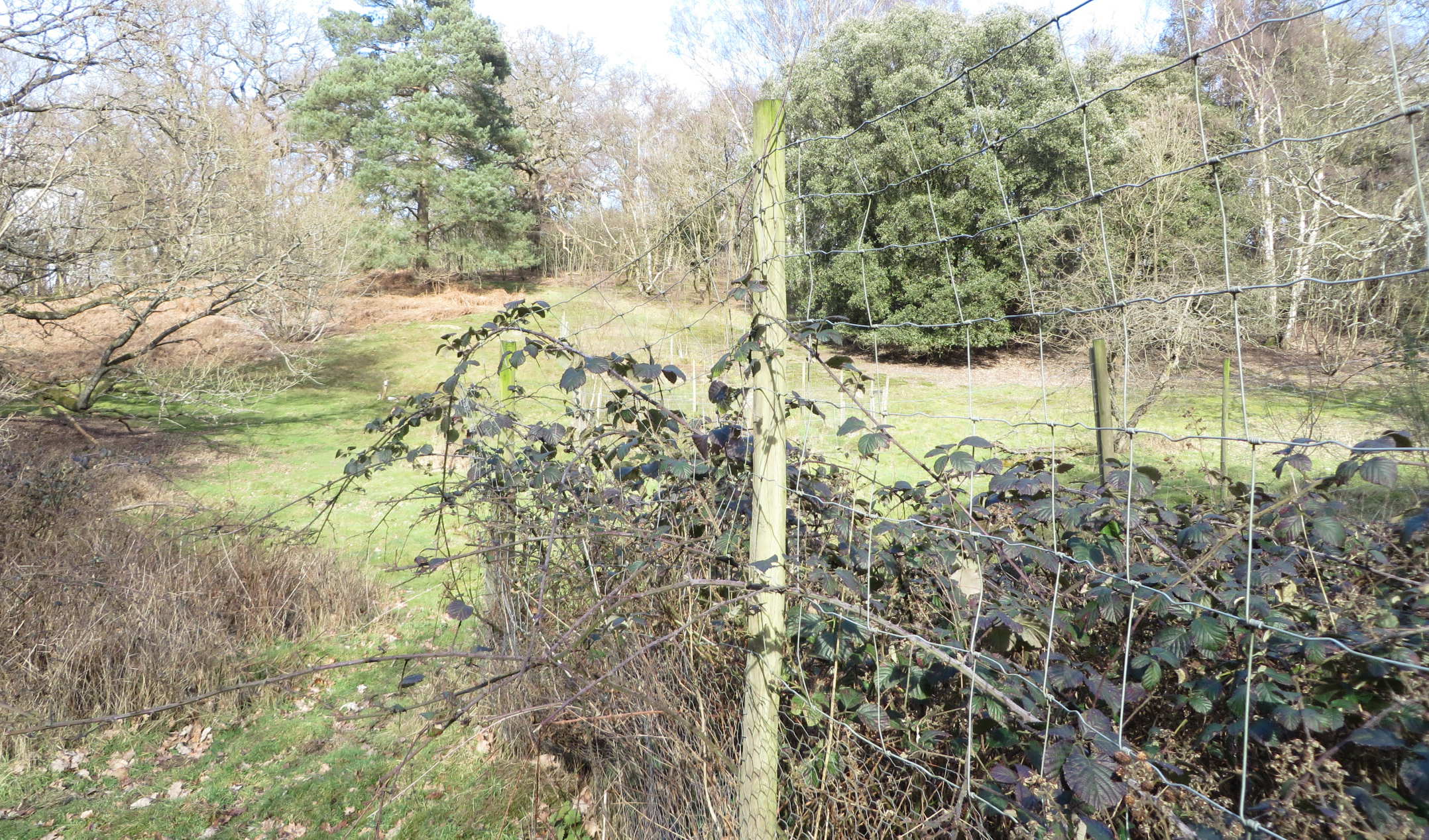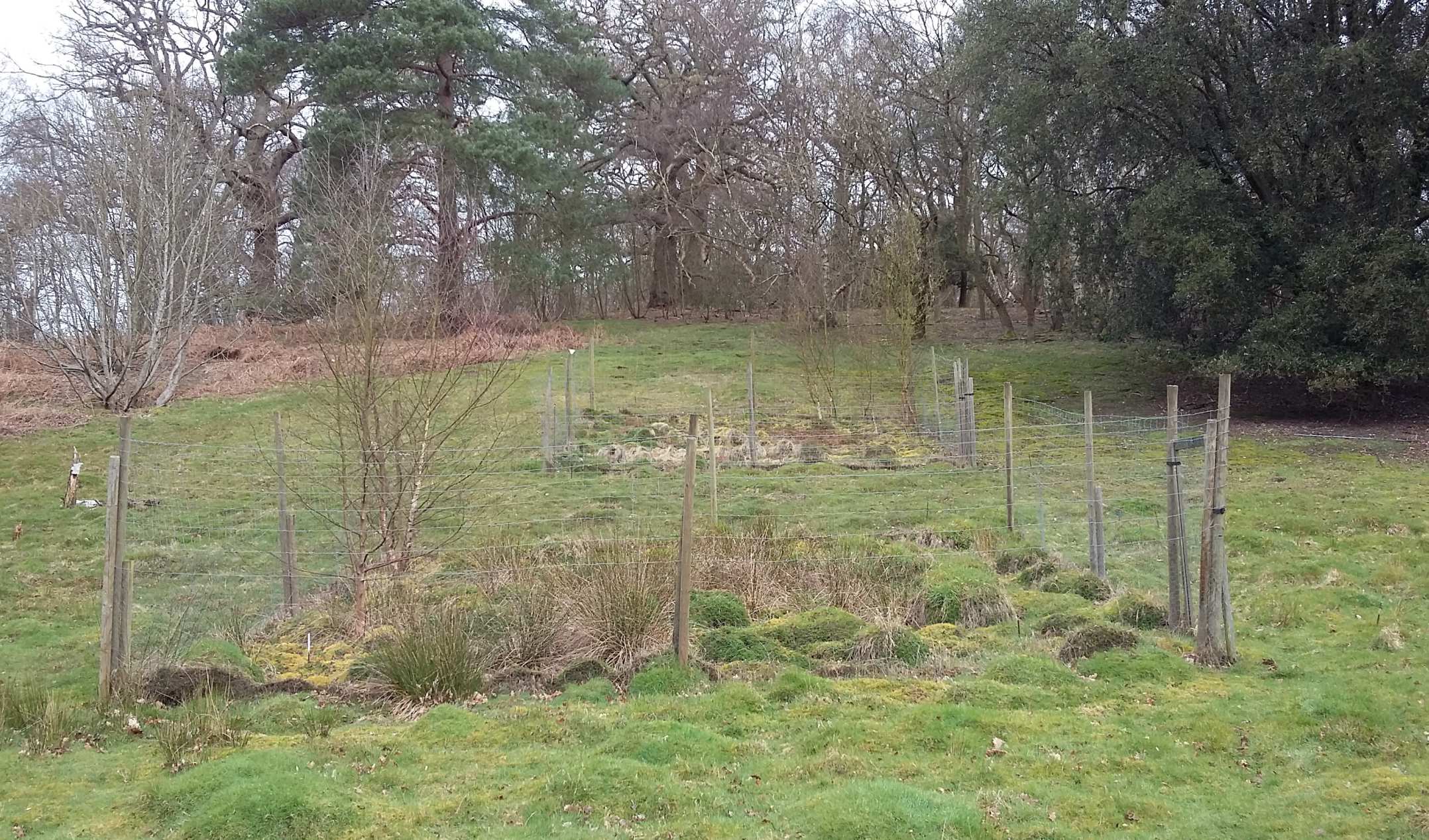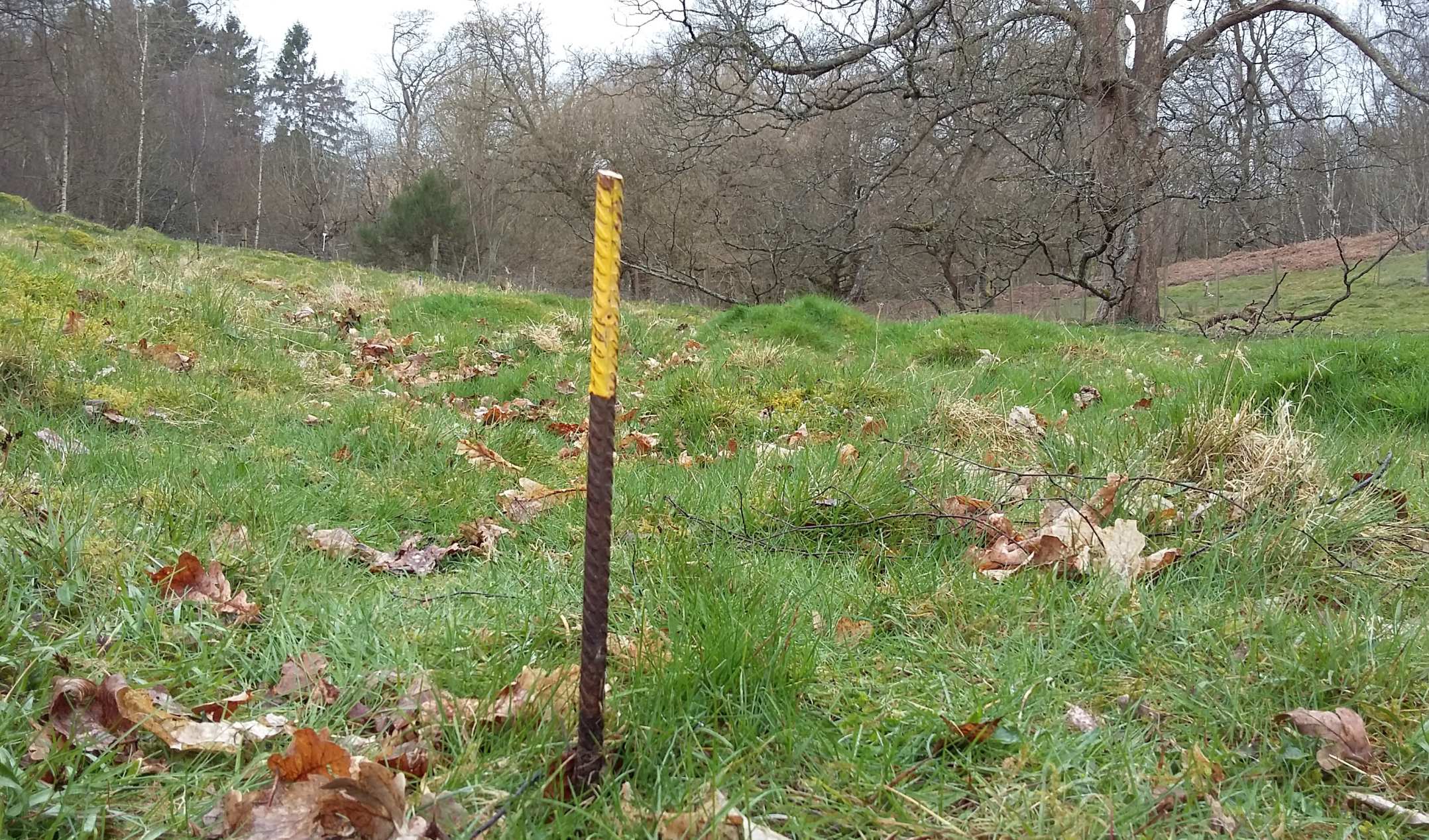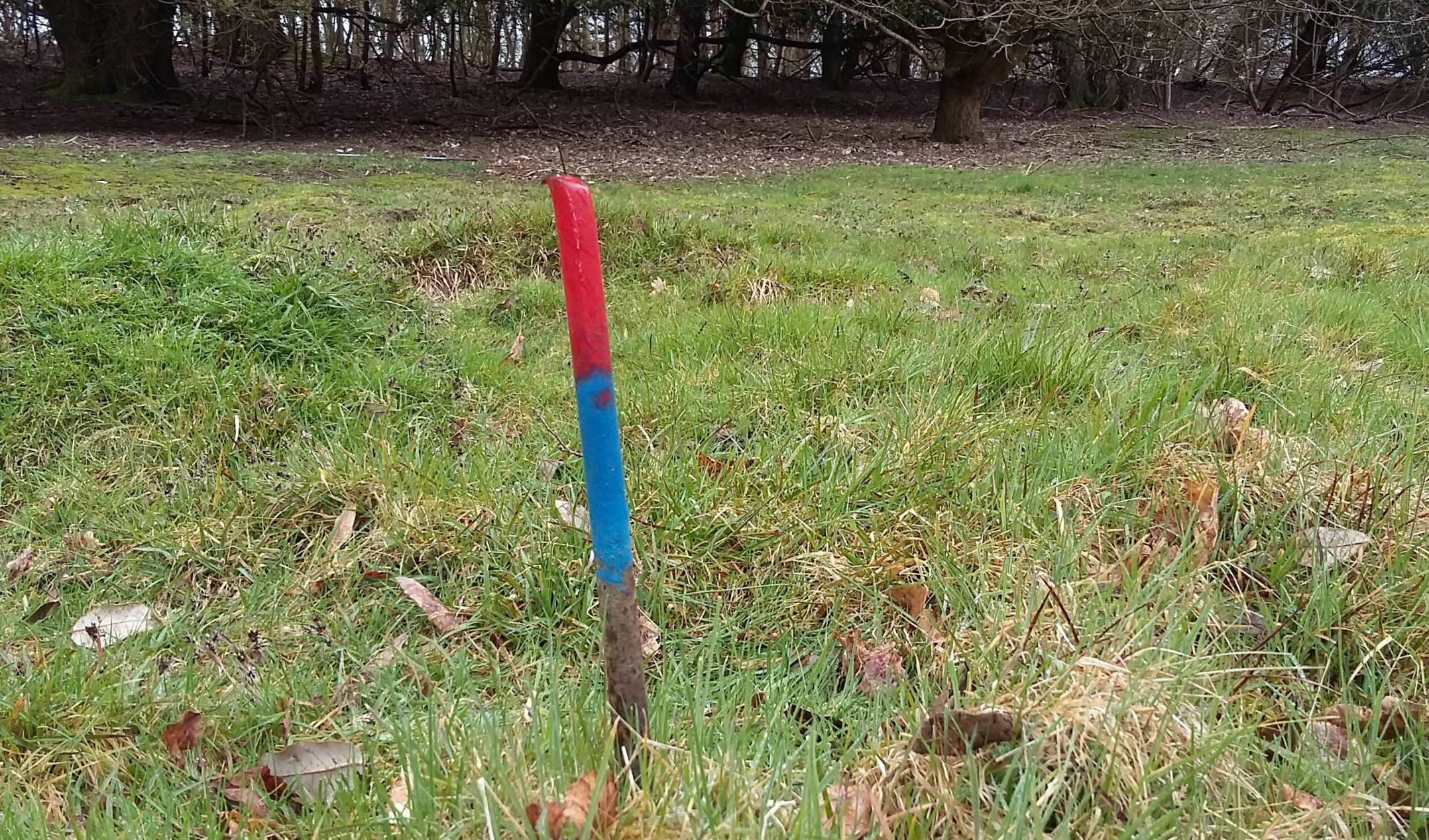Nutrient Network project (NutNet)
Silwood Park hosts two of the three sites in UK for Nutrient Network (NutNet). This is a cooperative experiment consisting of 78 sites dominated by herbaceous plants and distributed around the globe. The experimental design and data collection follow the same protocols in all participating sites allowing global analyses that aim to understand the impact of fertilization and alteration of plant-consumer interactions on herbaceous-plant dominated ecosystems. At Silwood Park, NutNet sites are located in Heron's Brook Meadow and Rookery Slope, mesic grasslands with sandy, acidic soil of the Bagshot Series surrounded by oak (Quercus robur) and birch (Betula pendula) woodlands. European rabbits (Oryctolagus cuniculus) have been very abundant at both sites since the 1950s.
One the most important impacts of human activity on herbaceous ecosystems is the application of fertilizers and the alteration of grazers-plant interactions. To study the effect of these activities in plant communities the experimental design of each site consist of 3 replicate blocks, each containing 10 5 x 5 m plots with unique treatments. Plots are fertilized with a combination of nutrients (N, P, K) and some are fenced to exclude aboveground mammalian vertebrates. Core data collected in all plots includes aboveground live and dead plant biomass and species abundance.
This project started in 2007 and is hosted by the Department of Ecology, Evolution, and Behavior at the University of Minnesota. The experimental sites at Silwood Park are coordinated by Professor Mick Crawley and supported by the Department of Life Sciences at Imperial College London.
NutNet google map
http://www.imperial.ac.uk/people/m.crawley
Experimental design
General methodology adapted from NutNet's protocols and templates documents.
The core experiment is a completely randomized block design with three blocks, 10 treatments per block, and three replicates per treatment (N = 30 total experimental units). Each experimental unit is 5 x 5 m in size, with the experimental units separated by at minimum 1 m.
- N: Ammonium nitrate (NH4NO3) at 144 kg ha-1year-1
- K: Muriate of potash (KCl:NaCl ) at 224 kg ha-1 year-1
- P: Triple superphosphate (Ca(H2PO4)2·H2O) at 35 kg ha-1 year-1
| Colour code | N | P | K | Enclosure |
|---|---|---|---|---|
| White | 0 | 0 | 0 | 0 |
| Yellow | 0 | 0 | 1 | 0 |
| Blue | 0 | 1 | 0 | 0 |
| Red | 1 | 0 | 0 | 0 |
| Yellow & blue | 0 | 1 | 1 | 0 |
| Yellow & red | 1 | 0 | 1 | 0 |
| Blue & red | 1 | 1 | 0 | 0 |
| Grey | 1 | 1 | 1 | 0 |
| White | 0 | 0 | 0 | 1 |
| Grey | 1 | 1 | 1 | 1 |
| 0=control, 1=nutrient/fence added | ||||
Data
Data of aboveground standing biomass and percent cover was collected annually from 2009 to 2016. Specifically, percentage of cover of each plant species, bryophytes and bare ground in each plot is available for Heron's Brook Meadow and Rookery Slope from 2008, 2010 to 2013 and 2016. Data of aboveground biomass separated by functional groups (dead organic matter, bryophytes, graminoids, herbs and woody plants) is available for Heron's Brook Meadow and Rookery Slope from 2009 to 2012. Data of aboveground biomass measured for each plant species, bryophytes and dead organic matter is available for Heron's Brook Meadow and Rookery Slope in 2009 and 2010
Find here the metadata file for this experiment (366KB)
Publications
A complete reference list of NutNet publications can be found here
Selected publications
Stokstad E (2011). Open-Source Ecology Takes Root Across the World. Science 334: 308–309.
Firn J, Moore JL, MacDougall AS, Borer ET, Seabloom EW, HilleRisLambers J, Harpole WS, Cleland EE, Brown CS, Knops JMH, et al. (2011) Abundance of introduced species at home predicts abundance away in herbaceous communities. Ecology Letters 14: 274–281.
Lind EM, Borer E, Seabloom E, Adler P, Bakker JD, Blumenthal DM, Crawley M, Davies K, Firn J, Gruner DS, et al. (2013) Life-history constraints in grassland plant species: a growth-defence trade-off is the norm. Ecology Letters 16: 513–521.
Seabloom EW, Borer ET, Buckley Y, Cleland EE, Davies K, Firn J, Harpole WS, Hautier Y, Lind E, Macdougall A, et al. (2013) Predicting invasion in grassland ecosystems: is exotic dominance the real embarrassment of richness? Global Change Biology 19: 3677–3687.
Borer ET, Harpole WS, Adler PB, Lind EM, Orrock JL, Seabloom EW, Smith MD. (2014) Finding generality in ecology: a model for globally distributed experiments. Methods in Ecology and Evolution 5: 65–73.
Borer ET, Seabloom EW, Gruner DS, Harpole WS, Hillebrand H, Lind EM, Adler PB, Alberti J, Anderson TM, Bakker JD, et al. (2014) Herbivores and nutrients control grassland plant diversity via light limitation. Nature 508: 517–20.
Seabloom EW, Borer ET, Buckley YM, Cleland EE, Davies KF, Firn J, Harpole WS, Hautier Y, Lind EM, MacDougall AS, et al. (2015) Plant species’ origin predicts dominance and response to nutrient enrichment and herbivores in global grasslands. Nature Communications 6
Grace JB, Anderson TM, Seabloom EW, Borer ET, Adler PB, Harpole WS, Hautier Y, Hillebrand H, Lind EM, Pärtel M, et al. (2016) Integrative modelling reveals mechanisms linking productivity and plant species richness. Nature 529: 390–393.
Widdig M, Schleuss PM, Weig AR, Guhr A, Biederman LA, Borer, ET, Crawley MJ, et al. (2019) Nitrogen and Phosphorus Additions Alter the Abundance of Phosphorus-Solubilizing Bacteria and Phosphatase Activity in Grassland Soils. Frontiers in Environmental Science 7 (185)
Widdig M, Schleuss PM, Biederman LA, Borer, ET, Crawley MJ, et al. (2020) Microbial carbon use efficiency in grassland soils subjected to nitrogen and phosphorus additions. Soil Biology and Biochemistry 146
Related links





